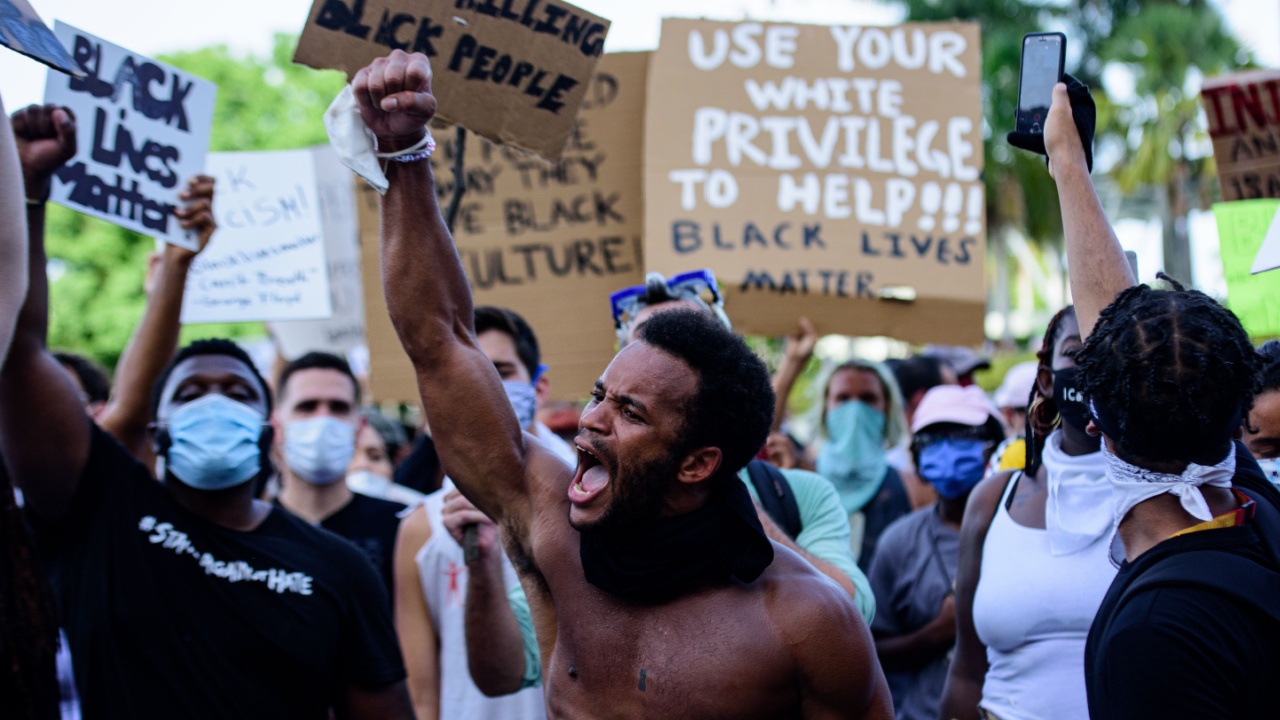Can America’s Race Problem Be Solved?

Editor’s Note: The key promise of the group quota regime is a new, final answer to a question that has troubled our country from the beginning: whether a multiethnic nation can ever truly be united, or whether the discrete interests of identity groups are allowed to rule. Group quotas are the ideal form of the second answer, establishing equal group outcomes as the necessary standard in law, in education, in criminal justice, and in every other social domain. The premise is so radical that William Voegeli describes this emerging quota regime as “a condition unknown in human history”— a condition whose realization would require the complete erasure of the old American order. This essay was originally published in The American Mind under the title “Melting Pot or Salad Bowl?”
It is hard to succeed without a workable definition of what it means to succeed. One big reason why our post-9/11 interventions in Iraq and Afghanistan became tragic misadventures, for example, was that the people who directed the War on Terror never offered a clear account of the benchmarks that would allow us to declare victory. “What exactly are we trying to accomplish here?” is a question that is crucial, yet so basic that we often fail to ask it.
Jeremy Carl’s The Unprotected Class performs this vital service with respect to race relations. Reading it forces us to ponder what it would mean for America to settle its racial tensions in a way that every group felt was fair. “America needs to decide,” Carl writes. “Does it want mass interracial score-settling or does it want something resembling a functioning multiethnic democracy?”
And what are the hallmarks of such a democracy? Carl closes his book by citing a letter James Madison wrote in 1820, three years after he had completed his second term as president and returned to Montpelier. It was addressed to Jacob De La Motta, a Jewish physician who, having delivered a speech at the consecration of a synagogue in Savannah, Georgia, had sent Madison a copy. Carl finds Madison’s affirmation of religious pluralism applicable to the challenge of ethnic pluralism. “Equal laws protecting equal rights,” Madison wrote, are “the best guarantee of loyalty, and love of country; as well as best calculated to cherish that mutual respect and goodwill among citizens of every religious denomination which are necessary to social harmony.” We may plausibly extend Madison’s argument to say that political equality not only promotes social harmony but, in a virtuous circle, is fortified when mutual respect and goodwill predominate.
Conversely, a dominant group that cynically manipulates political equality to burden and humiliate a subordinate group not only exacerbates social tensions but encourages the belief that equal justice under the law is a sham rather than a serious principle. The social harm inflicted by Jim Crow was compounded by the political harm inflicted by Plessy v. Ferguson (1896), in which the Supreme Court held that the 14th Amendment’s guarantee of equal protection under the law could be satisfied by public schools and administrative standards that were “separate but equal.”
This interpretation might not have been entirely laughable if it had given rise to concerted efforts to guarantee that black children in the South attended public schools that really were equal in quality and resources to the ones white children attended. Or if white voters were required to pass the same literacy tests as black voters. But, of course, de jure segregation separated the races while not even going through the motions of treating them equally. The resulting social tension gave rise to the corrosive belief that equal justice under the law was just a façade the strong employed to fortify their advantages against the weak.
By 1978, sociologist William Julius Wilson could argue in an influential book, The Declining Significance of Race, that race was actually declining as an independent variable determining socioeconomic outcomes. Class, instead, had come to explain more about poverty, crime, educational attainments, etc. The declining significance of race is in fact one way to formulate the goal of a reasonably successful multiethnic society. It recalls the hopes voiced after Barack Obama was elected president in 2008 that America was on its way to becoming a post-racial society, where being black or Jewish would be a detail that told you very little about a person, and had little effect on the course of that person’s life.
This melting pot ideal of an encompassing American identity in which ethnic categories are of vestigial rather than ongoing significance has obvious appeal as a way to promote goodwill and social harmony. Yet it is also possible to understand minority groups’ misgivings about a compound national identity in which their contributions will be dwarfed by those of larger groups. Hence the rise of particularism, the sense that, William Julius Wilson and Obama notwithstanding, our age’s dominant theme is the ever-increasing significance of race. (And not just race, as we are reminded by gay pride parades, Women’s History Month, etc.) Pluralism is usually understood as a practical acknowledgement of a social reality, but identity politics and multiculturalism take an ideological stance against assimilation. From many, many becomes the resulting imperative.
There are cases to be made for the melting pot or the salad bowl as the best way to deal with social heterogeneity. But whichever argument is strongest, it’s hard to deny that a society must choose one course or the other, rather than try somehow to have both.
Take housing policy. In The Color of Law, Richard Rothstein calls on the federal government to penalize suburbs that are insufficiently integrated. He maintains that a suburb’s black population should be no more than 10 percent below or above the proportion of the black population in an entire metropolitan area, so as to prevent both excessively white homogeneity and also “resegregation” caused by white flight. In metropolitan Chicago, for example, where blacks account for 16 percent of the population, this would mean that any suburb whose population was less than 6 percent black, or more than 26 percent, could expect to face the wrath of HUD.
But logic tells us there won’t be enough black people to go around, unless we’re going to prohibit blacks from residing in predominantly black neighborhoods. And social science reinforces lived experience on this point: most blacks, for various reasons, prefer to reside in neighborhoods where blacks are significantly overrepresented. Rothstein discusses survey data showing that both whites and blacks favor housing integration in the abstract. But whites think that a neighborhood is integrated when the black proportion of the population is about equal to the nationwide percentage, whereas blacks think it’s integrated when the proportion is two to four times the national proportion. These are not reconcilable aspirations.
A similar problem besets the question of who gets ahead and who doesn’t. President Lyndon Johnson gave a commencement address at Howard University in 1965, the year after he signed the Civil Rights Act into law, and weeks before he would do the same for the Voting Rights Act. Johnson, however, spent less time extolling those achievements than pointing to their insufficiency. Freedom and equal opportunity, he told the graduates, while essential, are “not enough.” The “next and more profound stage of the battle for civil rights” would seek “not just equality as a right and a theory but equality as a fact and…a result.” He framed the challenge this way: “You do not take a person who, for years, has been hobbled by chains and liberate him, bring him up to the starting line of a race and then say, ‘you are free to compete with all the others,’ and still justly believe that you have been completely fair.”
LBJ never said, in that speech or any subsequent one, what would be completely fair, or even reasonably fair. The implication was not very esoteric, however. Equality as a fact and a result is best understood as equal representation. Ibram X. Kendi has distilled this idea to its essence: racial disparities must result from either racism against blacks or the inferiority of blacks.
This standard applies to broad social trends, like the fact that the black poverty rate is twice that of whites, while their rate of home ownership is half that of whites. But it also, presumably, accounts for more granular results, such as the fact that blacks accounted for 4.7 percent of U.S. attorneys in 2012 and 4.5 percent in 2022, which means there are only about one third as many black lawyers as Kendi thinks there should be. The American Bar Association also reports that, among students who graduated from law school in 2019, 19 percent of blacks never passed the bar exam, even after multiple attempts in some cases, compared to 13 percent for Hispanics, 11 percent for Asians, and 6 percent for whites. Factor in that black law students are more likely than white ones to drop out, according to a study by the National Bureau of Economic Research, and the result is that 80 percent of white students who enter law school end up graduating and then passing the bar within the ensuing year, compared to 52 percent of black students.
In several of his books, Thomas Sowell, who has written extensively about the causes and implications of disparities between different groups, quotes political scientist Myron Weiner, who wrote in the 1950s, “All multi-ethnic societies exhibit a tendency for ethnic groups to engage in different occupations, have different levels (and, often, types) of education, receive different incomes, and occupy a different place in the social hierarchy.” In other words, the LBJ/Kendi goal of proportional representation in every facet of life is anthropologically untenable. We are condemning ourselves for failing to bring about a condition unknown in human history, and against which powerful social forces are working constantly. This is a recipe for endless frustration and bitterness.
The hope that America will muddle through to a resolution of its ethnic tensions lies in the fact that the obstacles appear more ideological than racial. As the social scientist Zach Goldberg has demonstrated, white liberals have stronger opinions about the futility of blacks’ efforts to overcome racial discrimination than blacks do, warmer feelings about immigration than Hispanics, and a more dogmatic commitment to diversity as a goal in and of itself than everybody. We may hope that Gresham’s Law does not apply to politics: good ideas will drive out bad ones. If so, vigorous yet empirically grounded polemics like The Unprotected Class help preserve the political space where Americans of goodwill work out the nation’s differences and heal its wounds.
William Voegeli is a Claremont Institute senior fellow and a Senior Editor of the Claremont Review of Books. He is the author of Never Enough and The Pity Party.



